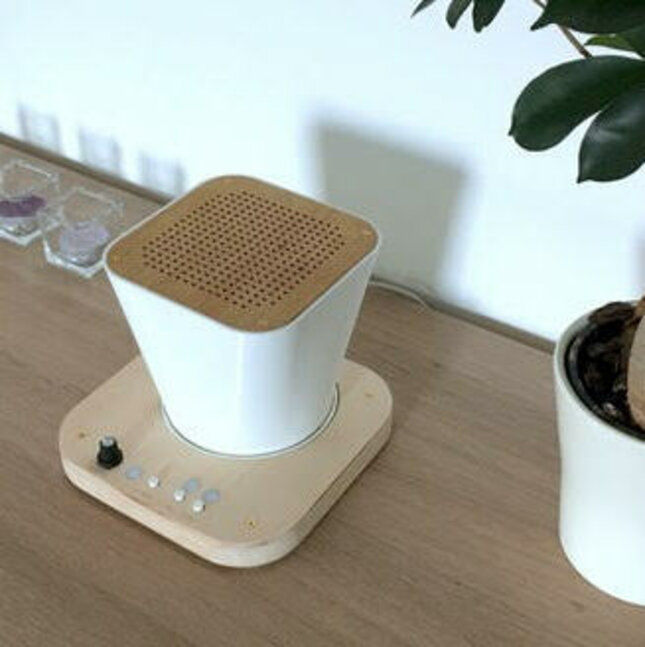The memory of sound
Maarten Houben defended his thesis Cum Laude at the department of Industrial Design on November 1st.

Sound is something very accessible. Everyone can hear it; everyone can react to it. It is precisely the everyday sounds that PhD candidate Maarten Houben uses to offer people with dementia a personal experience. With the sound of the sea, a train bell or a crackling fireplace, he gets them talking. His dissertation, which he will defend on November 1 at the Department of Industrial Design, offers a practical overview of what soundscapes can offer people with dementia.
“I’ve spent hours searching for specific sounds. For example, for a former train driver with dementia who had driven trains for 40 years. But the sounds of a departing train, a train announcement and chiming crossing gates did nothing for him. Until I found sounds recorded in the driver’s cab. It was difficult to hold a conversation with this gentleman, but he began talking effortlessly about the ringing bell that indicated when to brake and the buzzing of the dead man’s switch.”
Maarten Houben is fascinated by what everyday sounds can trigger in people with dementia. Over the last four years, he has spent a lot of time with people with dementia and their immediate families for his doctoral research, some of whom he even monitored for an entire year as part of a longitudinal study. The idea that music can open doors to memory is not new.
But, says Houben “Sound is more than just music. Nevertheless, the role of everyday sounds has received little attention so far. What we want to do is use these sounds to design so-called ‘warm technology’ to offer people with dementia a personal experience. Because while certain types of music can lift their spirits, we also see that everyday sounds can be used to trigger very specific memories. And it’s precisely those memories that are important to secure a person’s identity and personality.”

Personal soundscape
In multiple studies with both elderly people with dementia living at home and people with advanced dementia in a nursing home, Houben explored how to use everyday sounds to improve their quality of life. He was able to work with the people in early stages of dementia to create a personal landscape of sounds – a soundscape – representing specific memories.
Houben then brought these sounds together in the Tumbler, an interactive sound player that allows people with dementia to experience meaningful sounds at home by shaking and tilting. Although the response has been very positive, there are still some steps to take before the Tumbler will actually appear in living rooms, according to Houben.
“When do people get tired of a soundscape, and when that happens, how can they easily edit it themselves? I recently started as a postdoc at the TU/e Expertise Center for Dementia & Technology, where I will further develop the Tumbler.”

On the other hand, the interactive pillow VITA – a good example of ‘warm technology’ according to Houben – is already being used in several nursing homes. The soft pillow, which was developed in cooperation with care provider Pleyade, is frequently placed in the lap, after which people in advanced stages of dementia can also play sounds themselves by touching the colored surfaces.
Each surface represents a different sound. For example, as part of the general sound set, Daydreaming lets you listen to birds, and Day Out plays sounds of cycling. There is also room for a few personalized sounds, such as a recorded message from a family member. It is wonderful to see how you can connect people in a nonverbal way using the interactive pillow, says Houben.
“Even though talking is no longer possible, you can see that users respond to the sounds. A smile, a tear, a moment of relaxation. The pillow is easy to use, very accessible and encourages social interaction. We also included professional caregivers and family members in the process so we could look at it from multiple perspectives. But ultimately, we put the person with dementia first, that’s who we design for.”
Power of silence
By spending so much time working with sounds, Houben realized just how many things escape your attention on a daily basis. “When you start listening, you discover just how rich your surroundings are. For me, it’s become a moment to simply live in the ‘now’. Just closing my eyes and letting the sounds flood in can bring me a lot of peace.”
When there are annoying ambient noises, noise-canceling headphones playing sounds of nature can dispel the anxious feeling. And sometimes, the power of silence is also a wonderful thing. Even for a sound expert, Houben concludes with a laugh.
Source: Cursor
Latest News


